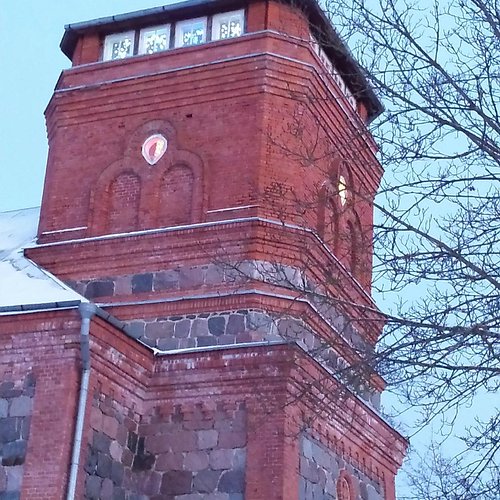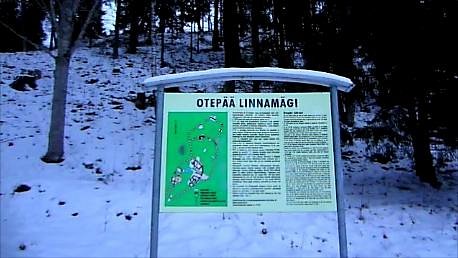Top 10 Sights & Landmarks in Valga County, Valga County
Discover the best top things to do in Valga County, Estonia including Torva Church Chamber Hall, Memorial Tablet of the Northern Sons of Finland, Barclay de Tolly Mausoleum, Valga Town Hall, Roman Catholic Church of the Holy Spirit, Monument to Alfred Neuland, Nipernaadi, Valga Prison Camp Cemetery, Otepaa Maarja Lutheran Church, Otepaa Fort.
Restaurants in Valga County
1. Torva Church Chamber Hall
Overall Ratings
5.0 based on 5 reviews
The Helme-Torva Apostolic Orthodox Church of the Birth of Christ was built in Valga Street in the years 1903 to 1904. Karl Shurin was in charge of the building work. The two domes and bell tower made the church one of the most imposing churches in the Viljandi Apostolic Orthodox Deanery. The church was seriously damaged during the fierce battles fought in September 1944 and it was only restored in 1990 as a chamber hall.Interesting facts:* the church was also used for salt and cement storage during the Soviet times;* the church-chamber hall currently belongs to the Lutheran church.
2. Memorial Tablet of the Northern Sons of Finland
Overall Ratings
5.0 based on 2 reviews
A black granite memorial tablet bearing almost 200 names was installed on the wall of the Valga Jaani (St John’s) Church in 1934 in remembrance of the Finnish volunteers who fell in the Paju Battle of the War of Independence. The polar bear sign of the Northern Sons Regiment is shown on the shield above the stone. In 1940 the memorial tablet was demolished with pickaxes by the order of communists. The memorial tablet was reopened on the 80th anniversary of the Paju Battle in 1999.Interesting facts:* the memorial tablet was opened in 1934 by President Konstantin Pats;* the first table was made in Finland and the second one in Tartu;* donations for the second tablet were collected by Ylistaro Rural Municipality (Finland) at the initiative of Ossi Salo.
3. Barclay de Tolly Mausoleum
Overall Ratings
5.0 based on 10 reviews
The Arch of Triumph in Valga County? No – it is the classicist mausoleum (architect Apollon Shtshedrin) that houses the sarcophaguses in which lie the embalmed bodies of Prince Michael Andrea Barclay de Tolly (1761-1818) and his wife (who died in 1828).General Field Marshal Price Michael Andreas Barclay de Tolly is one of the best-known people with connections to Estonia and probably the greatest Russian army commander. Barclay earned his fame in the wars against Napoleon from 1806 to 1815. A historical exhibition of the life and activities of the army commander was opened in the former guard’s house in 2008.
4. Valga Town Hall
Overall Ratings
4.5 based on 11 reviews
The Town Hall was built in 1865 and its high half-hipped roof, skylights and turrets make it one of the most outstanding examples of historicist architecture in Estonia. There is a memorial tablet to Johannes Martson, who was the mayor from 1902 to 1917, in the foyer of the Town Hall.Interesting facts:* Johannes was the first Estonian mayor in Estonia and his wax figure can be seen in Valga Museum;* Valga Tourist Information Centre is located in the Town Hall.
5. Roman Catholic Church of the Holy Spirit
Overall Ratings
4.5 based on 3 reviews
The church was built of natural stone and bricks in 1907. Lithuanian and Polish railway workers were actively involved in building the church. The church operated until 1940 and from 1945, the building was used as a warehouse and later as a gym.The extension of the church was built in 1995 and the church was renovated.Interesting facts:* the church does not have a tower as the imperial government of Russia refused to give permission to build one.
6. Monument to Alfred Neuland
Overall Ratings
4.5 based on 6 reviews
Weightlifter Alfred Neuland (1895-1966) who was born in Valga is the first Estonian Olympic Champion. He returned with a gold medal from the Antwerp Olympic Games in 1920. He was also successful at the Paris Olympic Games where he won the silver medal.Interesting facts:* sculptor Mati Karmin is the author of the bronze bust;* Hermann Lerchenbaum, the first Estonian known to have taken part in Olympic Games as a member of the US Navy's rowing team at the 1896 Olympic Games in Athens, was also born in Valga.
7. Nipernaadi
Overall Ratings
4.5 based on 7 reviews
NIPERNAADI, the eternal wanderer and dreamer, greets visitors and boldly raises his hat in the Sade park. Look at the sole of his raised travelling boot and you'll see adventurous roads awaiting for you. If you manage to polish even the smallest part of it you will always have good luck accompanying your travels. Look into his eyes and you'll start dreaming, too. If you happen to meet his eyes for a bit longer your longing will be filled with something beautiful and unusual. Wave him as you leave and adventures will follow.NIPERNAADI, a vigorous bronze sculpture inspired by the protagonist of the novel "Toomas Nipernaadi" by August Gailit is anxious to meet you.
8. Valga Prison Camp Cemetery
Overall Ratings
4.5 based on 6 reviews
During the Second World War, there was a camp for prisoners of war in the territory of the current Priimets Industrial Estate where the former stables of the Estonian Army had been converted into prisons. The Stalag 351 Camp was founded in summer 1941 for captured soldiers fighting in the Red Army and Camp 187 for German prisoners of war was founded instead of it in 1944. Interesting facts:* the cemetery where German prisoners of war are buried was restored at the initiative of the Volksbund Deutsche Kriegsgraberfursorge (People’s Association for Caring for German War Graves); * German prisoners of war built the Valga railway station that was completed in 1949;* the Mourning monument by Anton Starkopf was erected to commemorate Soviet prisoners of war.
9. Otepaa Maarja Lutheran Church
Overall Ratings
4.5 based on 11 reviews
Otepaa Maarja Lutheran Church is historically connected to the national flag of Estonia. The blue, black and white flag of the Estonian Student Union, which later became the national flag and in 1991 the official flag of the state of Estonia, was consecrated in the rectory of the church on 4 June 1884. Pay attention to the bar reliefs commemorating the event next to the entrance of the church and the interior with its English-style neo-gothic décor. Maaraj Church was given its current appearance in the middle of the 19th century. The doors of the church are open to everyone in summer. Services are held at 11 am on Sundays.
10. Otepaa Fort
Overall Ratings
4.5 based on 2 reviews
Come and walk to the top of the Otepaa Fort that is about thirteen thousand years old. The hill has two levels, has an oval shape when viewed from the top and lies more or less in the north-to-south direction. Its absolute height is 165.6 m above sea level. You will see the ruins of the stone stronghold established by Bishop Herman in 1224 on the top of the fort.Interesting facts:* the hill gave Otepaa its name, because it looked like the head of a bear when seen from the side (‘ott’ is the old Estonian word for ‘bear’ and ‘paa’ is the old Estonian word for ‘head’);* one of the strongest strongholds of Ancient Estonia stood on the fort;* the oldest known firearm in the world was found on the fort.










